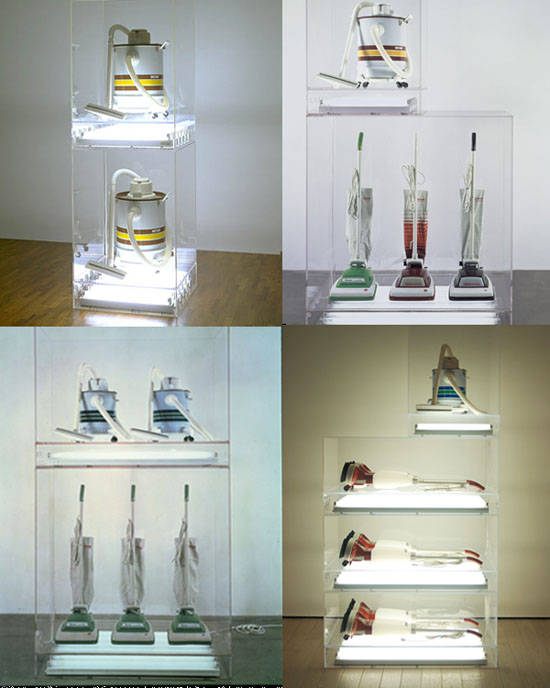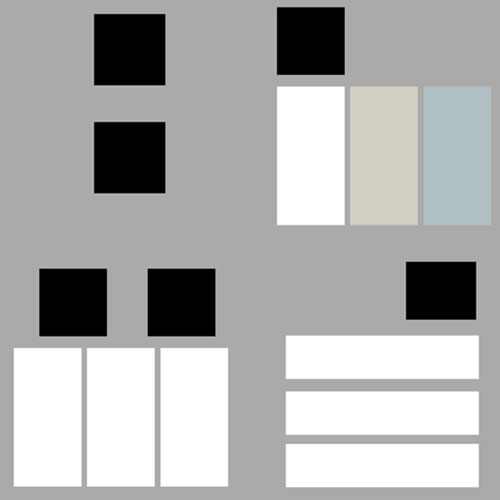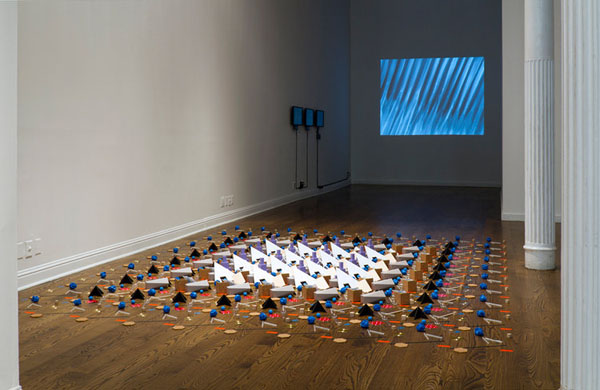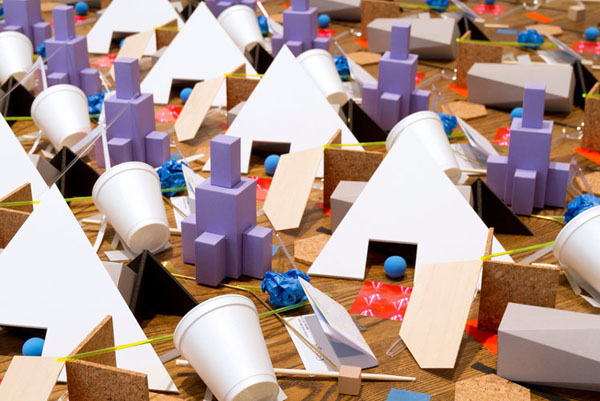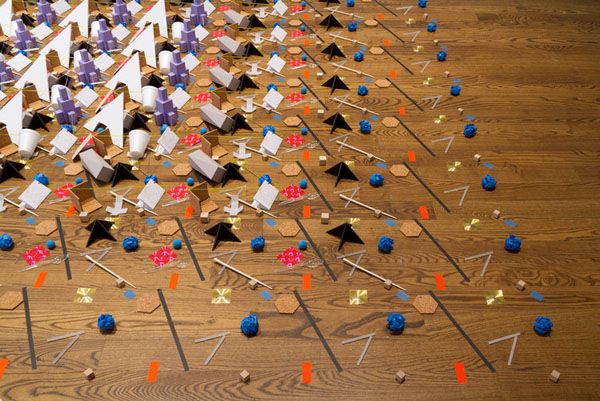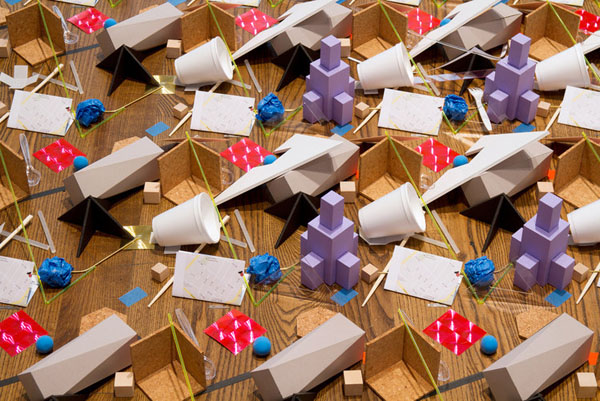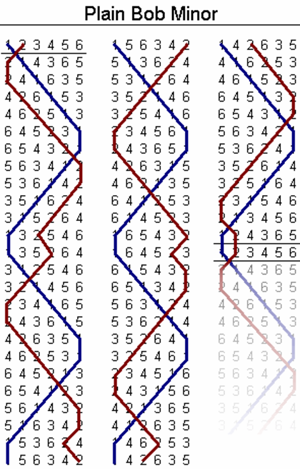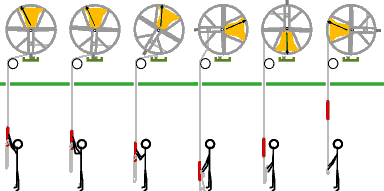Look at these four Jeff Koons sculptures. What do you see? The more attention you pay the more specific you can be. Size, color, shape, configuration… Oddly, the first thing I see is in the diagram below these.
clockwise from top:
- • New Shelton Wet/Dry Doubledecker, by Jeff Koons via Museum of Modern Art
- • New Hoover Convertibles, Green, Red, Brown, New Shelton WetDry 10 Gallon Displaced Doubledecker, by Jeff Koons via allartnews
- • New Hoover Deluxe Shampoo Polishers, New Shelton Wet/Dry 5-Gallon Displaced Quadradecker, by Jeff Koons via exhibitioninquisition
- • New Hoover Convertibles, New Shelton Wet/Drys 5-Gallon Doubledecker, by Jeff Koons via Astrup Fearnley Museet
I see abstract designs and I see the designs as potential patterns. I’m pattern-hungry, a quirk of the brain. For example if we simply tile out the two right-hand examples we get these two different patterns. (Sketches, not to scale.) Koons’ upper right is our only example where he varies color, hence the extra tones here. His lower right is the only one with reclining forms.
These artworks are simple to dissect visually and therefore handy in explaining some abstract notions about art. And they let us see that the abstract patterns can represent big banks of vacuum cleaners, yes. But they could equally represent toothbrushes or sounds. They could be plants in a formal garden. They could be the ratio of chocolate chips to pecans in your favorite recipe. Math.
What we’re looking at today is what happens in the arts when you map content onto a pattern.
________________________________________________
What if you complexify your elements and increase their number? Structured Studio Situation by Danish artist Tommy Støckel shows you one delightful possibility. Paper, styrofoam, balls, what have you. Configured, repeated and repeated. Sarah Sze in army boot camp? But look at how wonderfully the white rectangle in the middle helps to excite the overall design and yet is a pattern variation within the whole.
Støckel is a meticulous visionary.
All four views of Structured Studio Situation by Tommy Støckel at Location One, New York via Støckel’s website
________________________________________________
We said a pattern could be built of sounds — Ravel’s Bolero is a fine example. Or here’s a diagram for bell-ringers in a steeple that tells them who rings next. The very animated GIF below (30 frames )is from the same source.
Bell-ringing chart and animation both from James Bryant, University of Texas at Austin. via his webpage about campanology.
Patterned sound. Which brings us to the work of Gabriel Shalom, a German videomusician whose artistry impresses me. I remember it, I ponder it. Shalom’s patterning units are short video clips. Here’s what he makes of them.
[vimeo]https://vimeo.com/26633020[/vimeo]
Object Oriented — Rafael, by Gabriel Shalom via his vimeo page
[vimeo]https://vimeo.com/26623480[/vimeo]
Object Oriented — Giles, by Gabriel Shalom via his vimeo page
________________________________________________
This blog takes more than a passing interest in notions of patterning. We’re pattern-making, pattern-seeking animals. So are orcas, robins, dancing bees. It’s fundamental, mighty, often transparent — and can be a wonderful lens on the fruits of creativity.
look further
Gabriel Shalom
- on vimeo
- on Behance.net
- KS12 – creative studio for storytelling
Tommy Støckel
- Støckel homepage
- Paper-Made Art Installations That Mimic The Digital World by Kelsey Campbell-Dollaghan on Co.Design.
A near-oops with an Oom-pah-pah
- I was going to start this post with this line:The syllables oom-pah-pah may conjure up a tuba for you — because what looks like nonsense is actually a pattern we recognize. Because I was about to attribute it to John Philip Sousa I looked it up. Good thing. Wikipedia says:“Oom-Pah-Pah” is a lively and somewhat risqué song from Lionel Bart‘s musical Oliver!, sung by Nancy and the crowd at the “Three Cripples” tavern. The word “oom-pah-pah” is seemingly used euphemistically to refer to both intoxication and fornication; however, as the song points out, the word’s meaning is only as dirty as the listener interprets it.


